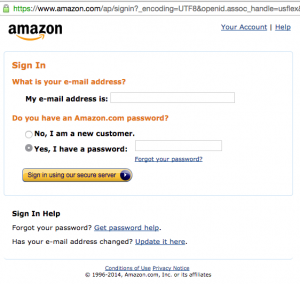Not only is Facebook the biggest social network on the planet, it’s also the dominant force in social advertising. This is the upshot of a recent report issued by Strategy Analytics, which reveals that Facebook accounted for three-quarters of global social network ad spend in 2014. Overall, ad spend on social networks grew a robust 41% globally in 2014, totaling over $ 15.3 billion, and now accounts for 11% of global digital ad spend. The report also notes that ad spend on social networks is expected to grow by 29%, totaling $ 19.8 billion, by 2015.
Facebook’s social advertising dominance is especially impressive given that Facebook hasn’t any presence in China, which is the 3rd largest worldwide market for social network ad spend with 8% market share (the US has the largest market share with 41%; the UK is number two with 8.2%). Another notable stat from the Strategy Analytics report shows the US had the highest social network ad spend per social network user at $ 31.37 in 2014. Moreover, this number is expected to increase 27% to $ 39.84 in 2015. Beyond social advertising, Facebook remains the largest social platform, accounting for 68% of all social network users globally.
So Facebook is the dominant player in social media, and by extension, social advertising.
But why is this?
Here’s my take. To help brands and marketers find success with their social ad campaigns, Facebook offers tools on both the input and output side of the equation.
Refining the Input: Transforming Raw Audience Data into Actionable Marketing Insights with Facebook Topic Data
In early March of this year, Facebook rolled out a new tool for marketers called Topic Data. Here’s how they described it in a blog post announcing the new product:
Topic data shows marketers what audiences are saying on Facebook about events, brands, subjects and activities, all in a way that keeps personal information private. Marketers use the information from topic data to make better decisions about how they market on Facebook and other channels, and build product roadmaps.
The post goes on to provide some examples to help us better understand how brands might use the tool, such as how a business selling a hair de-frizzing product could see demographics on the people talking about humidity’s effects on their hair to better understand their target audience, or how Topic Data could enhance a fashion retailer’s ability to see the clothing items its target audience is talking about to decide which products to stock. Facebook also points out that brands can use Topic Data to measure brand sentiment.
Topic Data is not meant to be a direct ad targeting tool. Facebook makes it clear that all user data is “anonymized and aggregated,” meaning all personal identifiers have been scrubbed from the data set. Because of this, the results delivered to marketers are analyses and interpretations of the information, not actual topic data. Moreover, Facebook seems to be taking great care to ensure the privacy of individual users. In a recent article for TechCrunch, Josh Constine notes that at least 100 different users have to match a query for it to be allowed.
So how, you may be wondering, is this anonymized data relevant for marketers? Facebook has partnered with data aggregation and analytics firm DataSift to help turn its spate of raw consumer information into actionable insights. In the end, Topic Data’s usefulness as a marketing tool lies in its ability to generate trend data on the many discrete consumer segments that together make up Facebook’s massive user base.
So how does it work? As Josh Constine explains in the previously mentioned TechCrunch post, brands submit forward-looking queries through a third-party analytics provider that send them to DataSift, which in turn runs them against Facebook’s data and then issues anonymized statistical data about posts that match the query back to the analytics provider. This information can be turned into charts and insights or bundled with social analytics from other networks. In other words, marketers can’t instantly turn query results into ad targeting, but instead can use Topic Data’s insights to target Facebook users who match query demographics.
Shaping the Output: Creating Measureable, Cross-Device Ad Targeting Campaigns with Facebook Atlas
In 2013, Facebook purchased the Atlas ad serving and measurement platform from Microsoft for a cool $ 100 million, retooled the system and eventually re-launched it in the fall of 2014. Atlas gives Facebook the ability to serve contextually relevant ads to users regardless of the device they are on. Before Atlas, Facebook relied on cookies to track user browser habits and preferences. Unfortunately, cookies aren’t very reliable (on average, cookies have a 59% tracking success rate, and they overstate frequency by 41%), and they don’t work on mobile devices, which is a seriously limiting factor for social advertising in a world fast going mobile. Hence the power of Atlas, which enables advertisers to circumvent cookies and still target Facebook users based on their likes and interests on third party websites and apps, mobile or otherwise.
As Amit Chowdhry writing in Forbes explains, with Atlas, advertisers can track users across multiple devices to create highly targeted ad campaigns. They can determine whether a product was purchased on a desktop after viewing an ad on a mobile device. They can also make connections between online ads and offline conversions. For example, if a consumer purchases a product and discloses their e-mail address at the time of check-out, Facebook can inform the store if and when that person viewed its ad on the Internet.
In a post for Ad Age, Don Mathis, CEO of social data and marketing technology company Kinetic Social aptly summed up the value of the Atlas platform for companies and marketers. “Atlas opens up two new and extremely powerful capabilities for brands and agencies: It lets them measure ad campaigns across screens by solving the cookie problem; and it lets them target real people across mobile and the web.”
Owning the Future of Social Advertising
Beyond Topic Data and Atlas, here are three unrelated nuggets of information that, when taken together, provide anecdotal evidence for the likely continued success of Facebook’s social advertising business.
1) As reported in eConsultancy, according to Marin Software, advertisers will spend more on mobile than desktop ads by 2015. Moreover, it appears that social ads on mobile are converting: 62% of all social ad clicks come from smartphones and tablets. This is good news for Facebook and its mobile-friendly Atlas platform.
2) In a January 2015 data dump, Facebook revealed that 65% of global Facebook video views occur on mobile devices. And here’s the big one: in a recent study, fully 76% of Facebook users said Facebook is the place where they most often discover videos. Just think of the ad targeting and placement opportunities…
Take that, YouTube.
3) Facebook is working on agreements to house content from a number of major publishers (including The New York Times, National Geographic, and BuzzFeed) natively on its social platform. Such deals would make social advertising on Facebook even more attractive for brands, allowing them to piggyback on the platform’s ability to serve targeted ads to users’ News Feeds even as users enjoy content from leading publishers.
{It’s worth noting that many are raising concerns about the long-term wisdom of such a move on the part of publishers and news organizations, citing the various implications of ceding content to Facebook—a move which may be difficult to reign in and which may, over time, transform the social platform from a content amplifier to a content destination hub.}
For these reasons and doubtless others I’ve failed to mention, the future indeed looks bright for Facebook’s continued dominance of the social advertising ecosystem.
(356)





